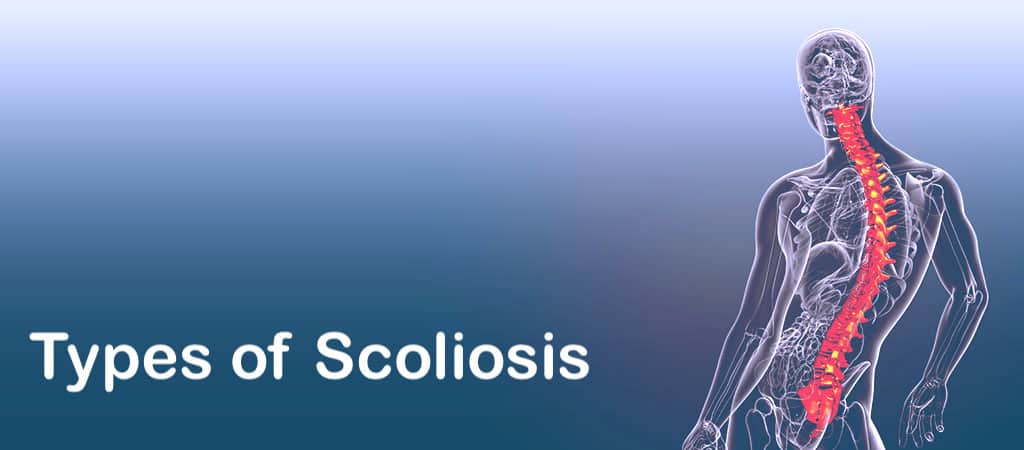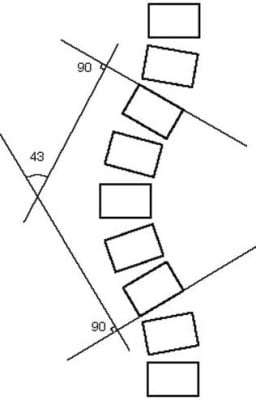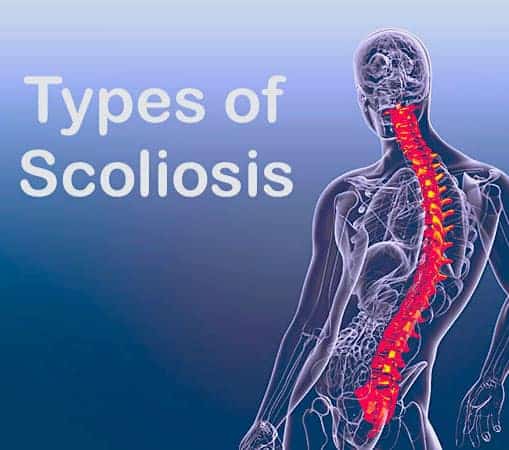
There are a variety of methods to distinguish between different types of scoliosis, but the most popular technique of measurement is etiology, i.e. identifying the fundamental trigger of the disorder. American Association of Neurological Surgeons indicates three classifications match into different types of scoliosis: idiopathic, congenital, and neuromuscular.
We all have natural curved spines but the degree to which our spines round could indicate types of scoliosis. In simple terms, the spine of a person who has scoliosis, on an x-ray frontal view would look more like a C or an S rather than a straight line.
According to the American Association of Neurological Surgeons (AANS), scoliosis impacts 2%-3% of Americans or about six to nine million individuals. It is defined by an unusual marginal spine curvature, and many distinct types exist. Different types of scoliosis are categorized by their cause, the age of the patient when it first started to develop, and its progression rate. Scoliosis can develop in infancy or early childhood. However, the most important age of onset for scoliosis is 10-15 years old, happening more often in females than males. Although all types of scoliosis contain some spinal curvature, some are more serious than others. With age, scoliosis tends to deteriorate but there are physical therapy and chiropractic treatments you can do to ease the symptoms and pains.
Idiopathic Scoliosis
Most types of scoliosis are idiopathic, meaning the cause is unclear or there is no known variable contributing to the deterioration of the condition. More than 80% of people with scoliosis have idiopathic scoliosis, the most common type of scoliosis, and the majority of these are adolescent girls. The most common region for scoliosis is in the thoracic spine.
Idiopathic scoliosis can manifest in the head being slightly off-center, the rib cage not symmetrical, or one hip or shoulder blade is higher than the other.
Congenital Scoliosis
Congenital scoliosis is rare, affecting only 1 in 10,000 newborns, resulting from spinal abnormalities that develop in the womb. During fetal development, vertebrae malformation is among the most common causes of congenital scoliosis. It may also result from partial bone formation or the absence of one or more discs in the spine. Because congenital scoliosis is related to birth-related spinal defects, it is normally diagnosed much earlier than other types. Symptoms of congenital scoliosis include uneven shoulders and waistline, prominence of one-sided ribs, head tilt, and side-leaning body postures.
In this type of scoliosis, there is a problem when the bones of the spines are formed. Either the bones of the spine fail to form completely or they fail to separate from each other at some point of fetal development. It is identified by a C-curved spine at birth.
Neuromuscular Scoliosis
Neuromuscular scoliosis is a spine curvature that develops due to a neurological or skeletal condition and/or disorder. This type of scoliosis develops much faster than others.
Chiropractic care for scoliosis
X-rays, MRIs, and CT scans can be used to verify the diagnosis as symptoms develop.
One thing to remember: Scoliosis is treatable but it is not technically “curable.” Scoliosis is every so often compared to diabetes as a condition that requires ongoing care. That said, if you discover the proper approach to managing your scoliosis, you can live a happy life with few limitations.

Chiropractic care is one of those options that are promising in taking care of the spine and improving the symptoms as long as you stay committed to the plan that you chiropractic doctor develops for you. A chiropractor would first look for how inflexible the spine is before they can start to reposition the spine. The long term intention is to realign and introduce movement to your muscles, bones and joints. Through appropriate treatments chiropractors can help slow the degree progression of scoliosis, reduce the muscular tension and teach you healthy habits of how to manage this condition on a daily basis.
Studies have shown that chiropractic treatments help in reducing the Cobb angle on adult patients with scoliosis, recording improvements in pain scores and disability ratings.
To receive chiropractic treatment for scoliosis in the Bay Area and close to Santa Clara, San Jose, or Sunnyvale please contact us or schedule an appointment online.







